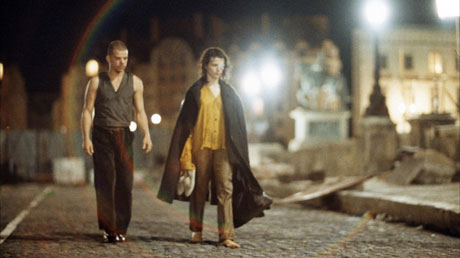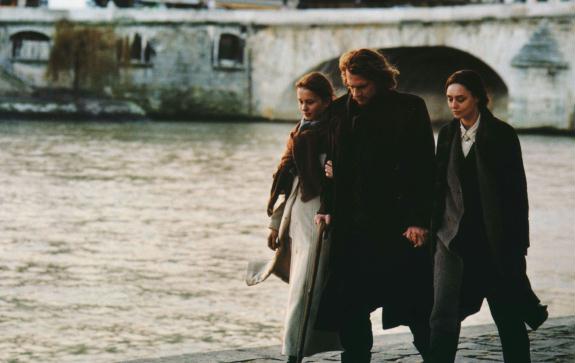In 1999, the French director Leos Carax was booed out of Cannes with his film Pola X. The character of Pierre in Pola X was based upon Leos Carax himself. Like Carax, Pierre was a celebrated artist whose career fell into decline after his earlier phenomenal successes. In 1984, when Carax was only in his twenties, he released his first feature length film, Boy Meets Girl, which was a huge critical and commercial success in France and Europe (although it was virtually ignored in the United States).
Carax was hailed as the next great European film director, with many comparing him to his mentor, Jean Luc Godard. Carax’s next film, Mauvais Sang, was also a huge hit and his reputation was rising. Then, in 1991, Carax released what was at the time the most expensive film in French cinema history—The Lovers on the Bridge.
Audiences and critics ravaged The Lovers on the Bridge, calling it a colossal waste of talent and money (although recently The Lovers on the Bridge has come to be seen as a classic). Needless to say, Carax was devastated, and he disappeared from the filmmaking scene until 1999 with Pola X, whose disastrous reception sent Carax back into exile until 2008’s anthology film Tokyo.
Perhaps, like Pierre, Carax finally realized that all the praise that he received earlier in his career was ultimately false, as proven by the derision he faced later in his career. Critics and audiences celebrated Carax during the early phase of his career, but when Pola X came out, the perception of Carax changed to that of a wasted talent. But, Pola X is no different from his earlier films in terms of its artistic quality.
Perhaps, like Pierre, Carax finally realized that all the praise that he received earlier in his career was ultimately false, as proven by the derision he faced later in his career. Critics and audiences celebrated Carax during the early phase of his career, but when Pola X came out, the perception of Carax changed to that of a wasted talent. But, Pola X is no different from his earlier films in terms of its artistic quality.
What was different was that Carax had fallen into the “tearing down” phase of his career after his initial success—a precarious and potentially career ending phase that all great artists experience. For some psychological reason, we have a tendency to want to destroy those things which we love the most.
Cinema history is filled with directors who were hailed as messiahs of film early in their careers, and then just as they reached their peek, the critics and the public soundly beat them down. Perhaps the cruelest example of this is Michael Cimino, who began his career with the commercial success of Thunderbolt and Lightfoot, and then skyrocketed into fame with The Deer Hunter, a hugely popular film that was a cultural phenomenon at the time of its release.
All this success occurred for Cimino while he was still only in his thirties. And then came the infamous film Heaven’s Gate, which, like The Lovers on the Bridge, was the most expensive film in Hollywood history at the time.
Other directors have faced similar derision after being initially celebrated, including even Steven Spielberg and Martin Scorsese, but unlike Cimino and Carax, they were able to recover and make much more successful films.
Other directors have faced similar derision after being initially celebrated, including even Steven Spielberg and Martin Scorsese, but unlike Cimino and Carax, they were able to recover and make much more successful films.
So, what lesson is to be learned here? For directors, the lesson is to realize that, in true existentialist fashion, public and critical response to their films is nothing more than a subjective perception.
In order to advance in their careers, they must learn to put the past behind them, and focus on perfecting their craft. Carax comments on this lesson in Pola X. The character of Pierre in Pola X begins the film with a comfortable life, living in an opulent mansion with an older, attractive woman. At this point, his life is defined by his success as a writer; his material wealth surrounds him, and he regularly makes public appearances talking about his work.
His life has meaning, but after he meets Isabel, a mysterious woman who may or may not be his sister, Pierre starts to question his existence. He sees how meaningless his wealthy lifestyle is and as he becomes more and more intrigued by Isabel, Pierre starts to pull away from his material goods.
Pierre realizes that his life has been defined by how the public perceives him, and he realizes that the perception they have of him conflicts with how he perceives himself.
To Pierre, he is still a great writer, but he confesses to Isabel at one point that he is unable to express himself artistically because there is “something” from the outside preventing him from doing so. This “something” is obviously Pierre’s constant need for public adoration for his work, which ultimately paralyses him from expressing himself.




No comments:
Post a Comment